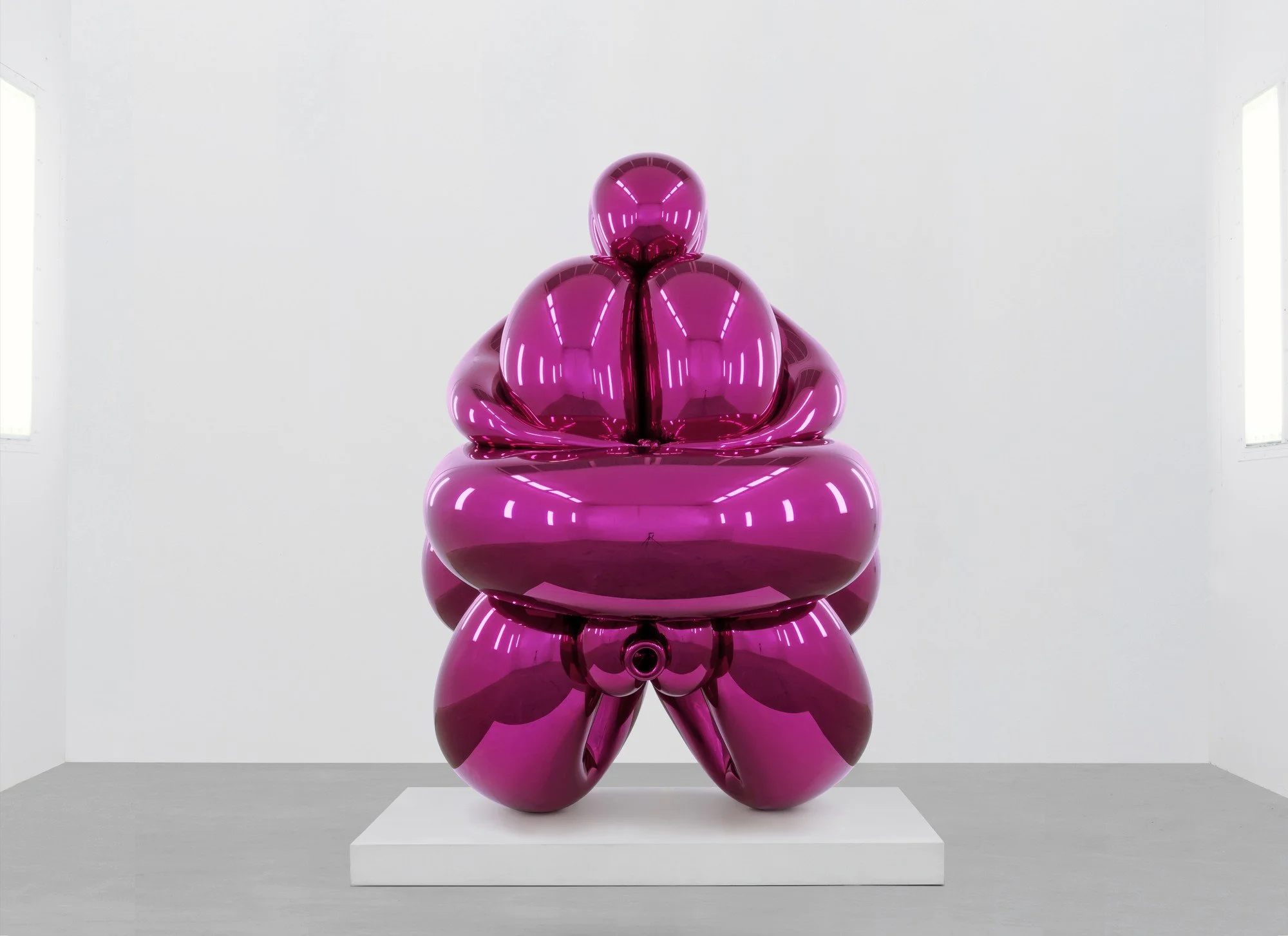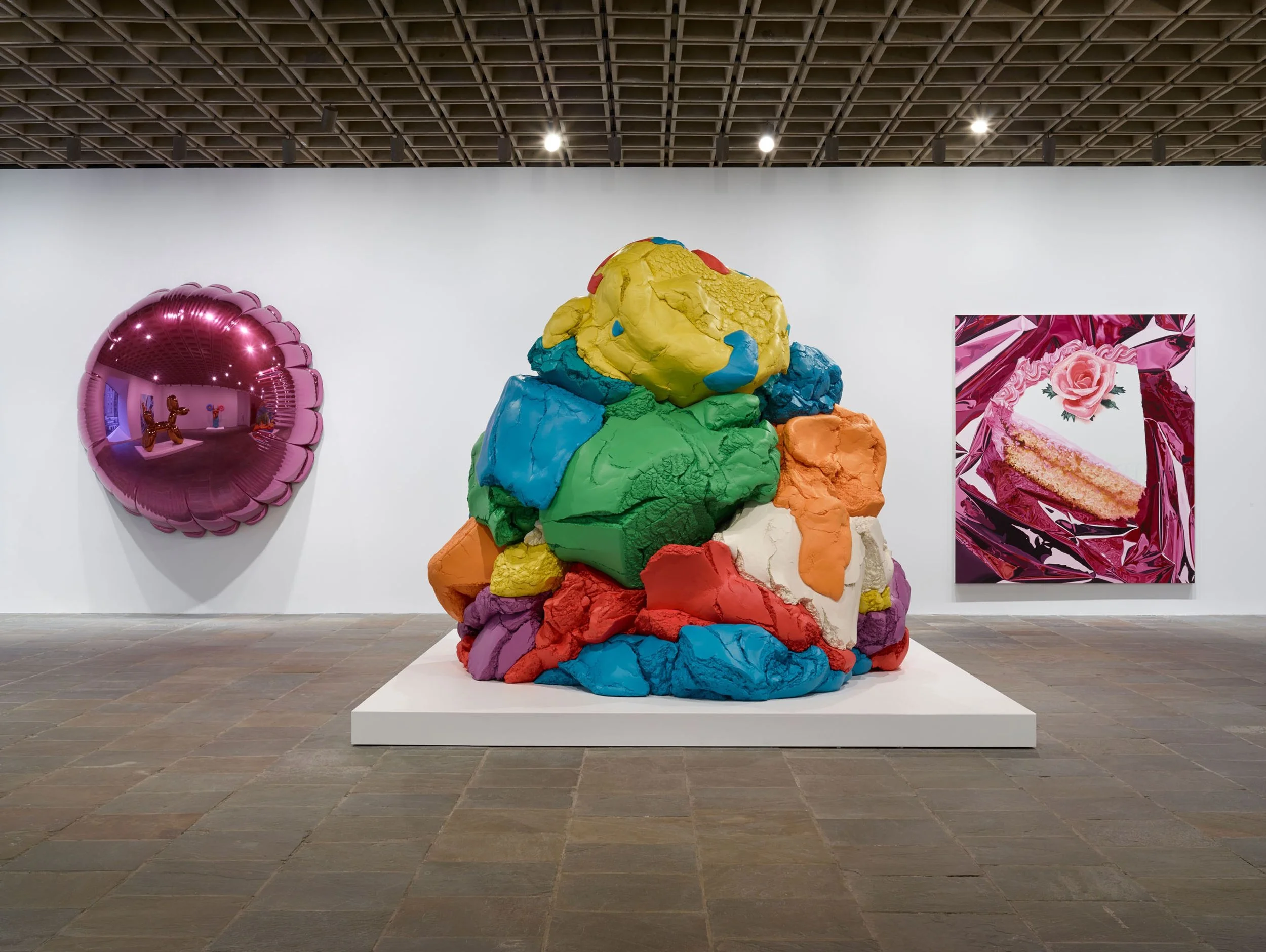Jeff Koons & detachment
Art as rebellion from the status quo helps us see what is really important.
I recently read Herbert Marcuse’s critique on Karl Marx’s economic theories, and am pleased to share the snippets that I rendered from it. Marcuse was a prominent Marxist, and used Marx’s economic theories to come to a better understanding of art’s role in society — what it is and why we are compelled to make it.
Now let’s jump right into the meat and potatoes. Marcuse said contemporary art — think Rothko, Pollock, Koons (especially Koons, you’ll see why) — has influential capabilities beyond mere entertainment.
He claims that art. is. DESTABILIZING. And destabilizing in the cognitive sense — that it promotes a sort of…“thought rebellion”.
When I look at art, I have an automatic reaction. I compartmentalize it — its either good, or bad. Traditional, or modern. Meaningful or meaningless. And I have notions of aesthetic beauty too — what is “pretty” or “ugly,” or in other words, “aesthetically pleasing or displeasing”. But Marcuse says the best art — the art that is the most destabilizing — is that which defies all these notions. Art that makes you rethink aesthetic beauty, taste, and most importantly — the institutions that instill these ideologies. Art is rebellious. A contrarian. A naysayer. Ay caramba!
Lets take a good look at the Top Dog when it comes to rebellious art. Jeff Koons.
Jeff Koons’ Balloon Venus Hohlen Fels (Magenta) (2013 - 2019)
“I love the gallery, the arena of representation. It’s a commercial world, and morality is based generally around economics, and that’s taking place in the art gallery.”
Jeff Koons Play-Doh (1994 - 2014)
Marcuse said that art is rebellious because it encourages the “emancipation of sensibility”. And boy do I love this. Marcuse theorized that people, under capitalism, are wired to look at material things, each other, and ourselves for that matter, through a self-indulgent functional lens. What can I do with this? How does this benefit me? What is this worth? What does this produce? Both Marucse and Marx make a claim that society is structured under an oppressive capitalist order, which, one can make claim is a product of basic human instincts towards survival. Nonetheless, it promotes the “sensibility” he is talking about here — one can argue that to be sensible means to engage in activities that progress the self in some way. And this “sensibility” represents a larger social order, one of the pursuit of progress and a sort of utilitarian rationality.
And because art is inherently non-functional — you cannot use it to produce something or to get anywhere with it — Marcuse says it promotes a cathartic experience. He says it frees us from a Hedonistic mindest wired for gratification to a disinterestedness relation to the piece. A sort of cognitive purification, it encourages a sensory experience debased of any alterior motive — one of pure detachment of desire, functionality and gain. And Marcuse says this is the destabilizing power of art, to throw us off our utilitarian habits and liberates us from the structure of society. This challenge to the status quo promotes an existential relief — uselessness as freedom rather than failure. Chew on that.
It explains why people are drawn to art, and why we create it, despite its non-functionality in a functional-based world. It goes beyond our instincts toward progression, and taps into the more sensual faculties we possess. I mentioned before that it ultimately encourages the disinterestedness in the art. I delve into that a little more here.
“Art is committed to that perception of the world which alienates individuals from their functional existence and performance in society”
Whether or not you agree with this is up to you. You make the rules.
Now lets use this to analyze Koons, because he takes a spin on Marcuse’s idea of the “emancipation of sensibility”. a controversial figure in the contemporary art world. Taking a look at some of his most porminent works: Balloon Venus Hohlen Fels (Magenta) and Play-Doh, I urge you to coem to your own conclusions about it. Would you say it is aesthetically pleasing? What would Marcuse think of it? What do you think of its $20 million valuation?
Lets tease this out. Koons’ works are kitschy, ironic, absurd — and yet he is highly acclaimed as a capital-A artist in a community that is typically regarded as high-brow, elegant and serious. This dissonance between what people believe art should be, versus what it is empirically has a sort of dissillutionment feel. It is confusing, and with its incomprehensibility comes scrutiny. It makes sense why his art is so controversial — his juvenile pieces feel like they are mocking the viewer, mixed with its incomprehensibiliy, subjugating the viewre to an inferior status. Koons destabilizes typical notions of what defines art, challenging our instinctual notions and exposing the ways they limit our worldview. In this regard, he is according to marcuse, freeing our sensibilities, despite its displeasing feeling. I kind of think of his controversy as a sort of growing pain — we are not yet used to his works.
“I love the gallery, the arena of representation. It’s a commercial world and morality is based generally around economics, and that is taking place in the gallery.”
But there is a defining feature of Koons’ works, the fact that ultiamtely, Koons’ still renders capitalistic gain. Play-Dohs price tag speaks for itself. His workultimately commodifies a Marcuse-esque dsiruption. This is
he is proviidng marucse’s relief, in such a radical way. His subjects are not serious, they do not demand one to tkae them seriously, and yet
They are arguably tacky and kitschy, not traditionally high-brow, Capital-A Art. and yet, they are
This dissonance between is how Koons defies the status quo, he is telling the .
It feels ironic, nonsensical, completely absurd and in this, redefines what constitutes art. this is how Koons is so prominent, is beause he is shocking. and within this shcok coems an evolution of the art world. Marx was right in that art reflects the soiciety that created in, but marucse hit
Now, I want to ask the question. Do you think this is the whole picture? Are you convinced that his Play-Doh sculpture sold for $20 million because of some sort of capitalism-fueled catharsis? This is a rhetorical question, because for me, I doubt it.
Here we come to Marcuse’s more compelling point — the one I personally perscribe to. He says that good art defies institutional norms. And he suggests in his essay Aesthetic Dimension that art evolves in such a way that it continues to shock the audience, redefining what constitutes “art”. Koons’ works are shocking insofar that they defies moral, economic and aesthetic norms. Let’s tease this out.
How Koons defies moral norms:
It was around the 60’s, when Andy Warhol started growing on the scene, that the art world transformed completely. It was a cultural shift — art become centered around the artist. And it became something of celebrity culture. The value of art seperated from the work itself and became dependent on who the artist was. This was a huge moment! It is such an opaque representation of the shift in society’s ideologies moving away from inherent value, and seeking a more ADD value. I could geek out on this. And I do! Click here my sisters. Anyway, I would say this was the start of a very polarizing debate on the ethics of art — mostly because artists were selling Brillo Boxes for millions (no hate, all love actually). But during a time when a quarter of the population was living under the poverty line, is it fair to start asking the questions of if this was fair or exploitation. (I talk about this here here here!).
And so Koons is sort of like Warhol — he sells his massive silly looking sculptures in a way that he is almost laughing in the public’s faces. Like yeah I make giant balloon dog figures, and yeah I’m gonna sell it for more than your life is worth. I mean, his moral/ethical controversy is well founded. Again, is his profit fair, or exploitation?
This quote. Lots to unpack here. He recognizes that art is increasingly commodified, bought and sold at a market price. Koons is, in a way, saying don’t hate the player, hate the game.
His art is the ebdiment of the human psyche, a sort of social experiemnt . It relects how
How Koons defies aesthetic norms:
So, what is the verdict? Koons defies norms — this idea holds water. But should this alone extricate him from public scrutiny? Is he really doing a service to society in praxis?
Sure — I can look at his art and feel a sort of cognitive relief, but I am also angry and confused and frustrated and resentful. I hate it, like, so much. His work is completely ironic, laughable, silly, but! It is not pedestrian. I cannot create what he has created. And you cannot either. If not art, it is undeniably craft. And the market certainly reflects this. So what is the $20 million actually buying? It is buying a piece of intellect — an idea, a representative concept.
a sort of final note on the orchestra of his
I find this a difficult question and I would love to hear your thoughts.
So with that being said, I like to believe that the $20 million price stamped on the lump of metal-turned-play doh is Koons’ final act. His preliminary swish of the baton in his show. He
size and suggested lack of intricacy
what he is selling is an idea — he is selling a piece of the intellect of the art world which is itself becoming more
what constitues art is getting more and more intellectually complex. and
Let’s look closer at this quote from earlier: “I love the gallery, the arena of representation. It’s a commercial world and morality is based generally around economics, and that is taking place in the gallery.” Lots to unpack here. I think he is doing exactly what Marcuse says — I think he is both recognizing and indicting the artworld. Koons is, in a way, saying don’t hate the player, hate the game. He calls out the fact that our cultures’s morals are centered around economics — value, functionality, performance, materiality — yet is performing in it simultaneously.
He makes people question the moldability of their world — rethink the ideas of what is within reach, what is denie
“tkaes one out of onesself” The aesthetic transformation becomes a vehicle of recognition and indictment. But this achievement presupposes a degree of autonomy which withdraws art from the mystifying power of the given and frees it for the expression of its own truth. PAGE 9“The catharsis itself is grounded in the power of aesthetic form to call fate by its name, to demystify its force, to give the word to the victims-the power of recognition which gives the individual a modicum of freedom and fulfillment in the realm of unfreedom.”

